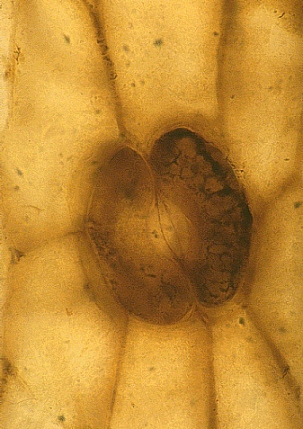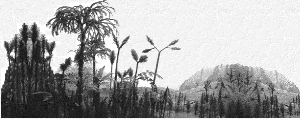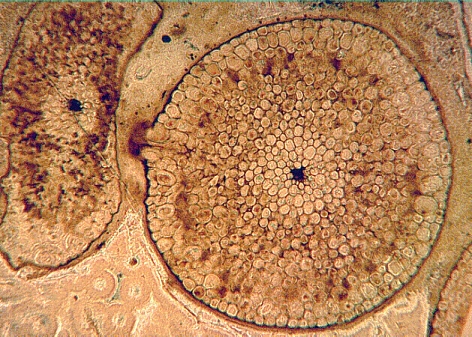Aglaophyton is the best
known of all Rhynie Chert plants. The plant was up to 15 cm high
and consisted of naked creeping axes which were occasionally bent upwards
and bifurcated. Longer axes were bent down again, resulting in typical
U-shaped morphology of the axes. Especially in the lower parts these
axes bore many lateral axes, which can be regarded as vegetative daughter
plants. The sinuous axes were lying loosely on the substrate surface
and functioned as rhizomes. Where the axes touched the substrate
so-called rhizoids were formed. These unicellular hair-like
protrusions
of the epidermal cells served for the intake of water and nutrients.
The entire plant was lying on the substrate. The stomata through which
gas exchange took place, consisted of two kidney-shaped guard cells.
Photosynthesis took place in the axes, like in other leafless
plants.
Although no chlorophyll has been found, the special shape of the cells
shows the location of the photosynthetic tissue. The cells of the outer
cortex are pallisade-like and directed upwards like in modern plants with
upright standing photosynthetic axes or leaves, e.g. Juncus.
Aglaophyton had terminally attached elongate sporangia which opended
with a spiral slit; the spores show a clear trilete mark.
|
 |





